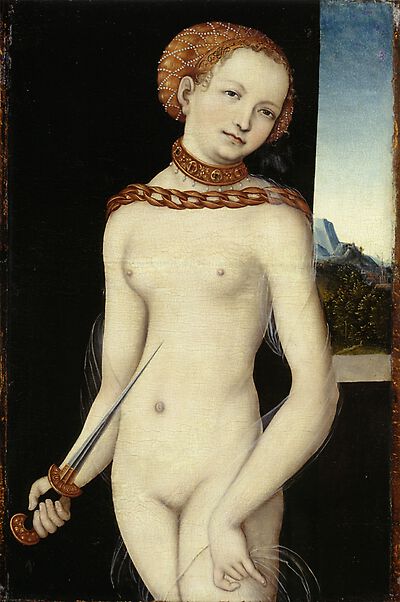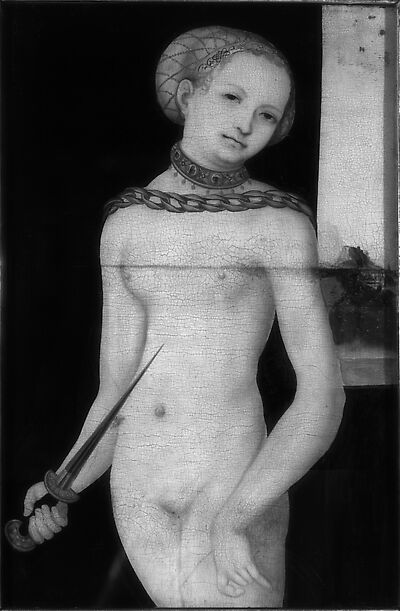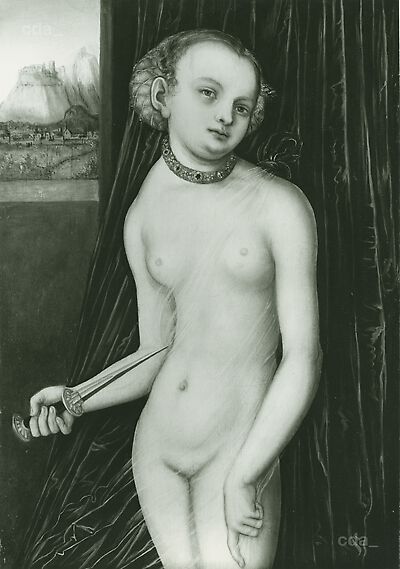The painting depicts Lucretia as a standing three-quarter length nude figure with a view of a landscape in the background. Her head is inclined to the right and she looks at the viewer. In her right hand she holds the dagger pointed against her breast and in her left
The painting depicts Lucretia as a standing three-quarter length nude figure with a view of a landscape in the background. Her head is inclined to the right and she looks at the viewer. In her right hand she holds the dagger pointed against her breast and in her left hand she holds her veil. This is wrapped numerous times around both her arms and covers her vulva, but because of its transparency doesn't hide it. She wears a heavy chain and a neckband decorated with pearls around her neck. Her hair is pinned up under a pearl bonnet.
The background is dark, but a window on the right of the painting indicates that she is in a room. Through the window there is a view of a wooded landscape with mountains and a church.
[see Exhib. Cat. Berlin 2009, 198f., No. III.17]
According to the legend Lucretia lived in the 6th century BC and was the beautiful and virtuous wife of the roman Collatinus. The roman King's son - Sextus Tarquinius fell in love with her. During a stay in her house Sextus threatened to kill her and shame her honour if she did not surrender to him. After the rape Lucretia had her father and husband vow vengeance and then she stabbed herself. The event led to an uprising in which the royal family was overthrown and the Roman Empire became a Republic.
Depictions of Lucretia who was seen as the epitomy of female virtue, chastity, fidelity and honour enjoyed great popularity, particularly in the 16th century.
[Literature: Bierende 2002, Follak 2002, Livius 1909]




